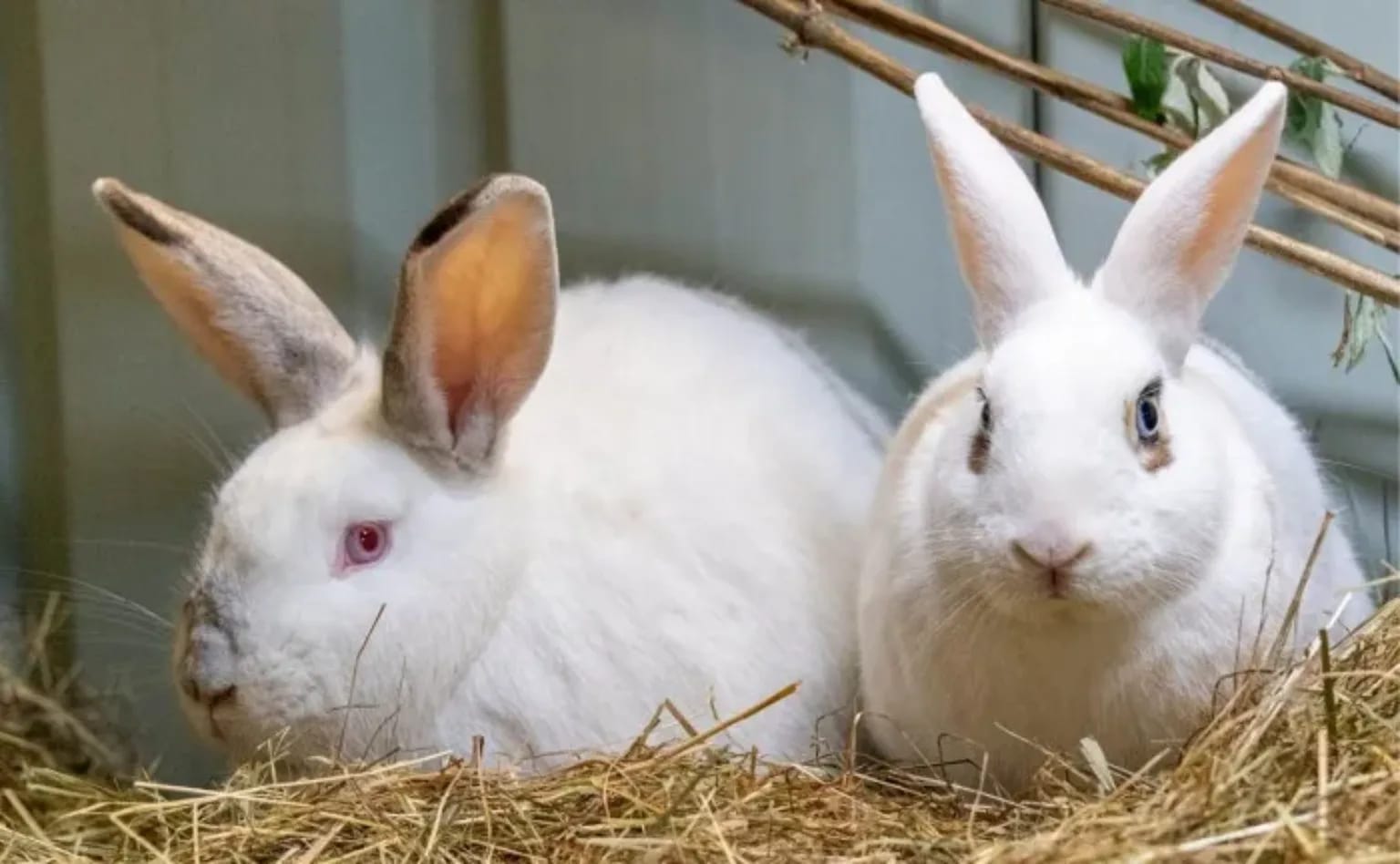
"Bunny Basics: How to Keep Your Rabbit Healthy and Hoppy" – Discussing rabbit behavior, social needs, diet, and habitat enrichment.
Rabbits are adorable and intelligent creatures that require proper care to stay healthy and happy. Understanding their behavior, diet, social needs, and habitat enrichment is essential for responsible pet ownership. This guide covers everything from their communication signals to their ideal diet and how to create an enriching environment that supports their well-being.
🐶 Pet Star
11 min read · 30, Jan 2025

Understanding Rabbit Behavior
Rabbits have unique behaviors that indicate their emotions and well-being. Knowing how to interpret their actions helps in building a strong bond with them.
Common Rabbit Behaviors and Their Meanings
- Binkying: A sudden leap or twist in the air, showing extreme happiness.
- Thumping: Rabbits thump their hind legs to signal danger or frustration.
- Chinning: Rubbing their chin on objects to mark their territory.
- Nudging: A way to get attention or express curiosity.
- Teeth Grinding: Soft grinding means contentment, while loud grinding could indicate pain.
Social Needs of Rabbits
Rabbits are highly social animals and thrive in environments where they can interact with humans or other rabbits.
- Companionship: Rabbits do best in pairs or groups but should be bonded properly.
- Playtime: Regular interaction and play with toys or tunnels keep them engaged.
- Handling: Gentle handling from an early age helps them feel secure and prevents stress.
Proper Diet for a Healthy Rabbit
A well-balanced diet is essential for a rabbit’s digestive health and overall well-being.
What to Feed Your Rabbit?
- Hay (80% of Diet): Unlimited fresh hay (like Timothy, Orchard, or Meadow hay) is crucial for digestion and dental health.
- Fresh Vegetables (10-15% of Diet): Leafy greens like romaine lettuce, cilantro, and parsley are great choices.
- Pellets (5% of Diet): High-quality pellets with fiber and no added sugars or artificial ingredients.
- Fruits (Occasional Treats): Apples, bananas, and berries in small amounts.
- Water: Fresh water should always be available in a clean bowl or bottle.
Foods to Avoid
- Chocolate, dairy products, and processed foods.
- Iceberg lettuce (low nutritional value, can cause diarrhea).
- Onions, garlic, and leeks (toxic to rabbits).
- Sugary treats or excessive fruits.
Creating a Comfortable and Enriching Habitat
A well-designed habitat ensures your rabbit stays safe, active, and happy.
Housing Requirements
- Spacious Enclosure: Rabbits need plenty of space to move around. The minimum recommended size for a rabbit enclosure is 4x2 feet, but bigger is always better.
- Safe Flooring: Avoid wire-bottom cages; use soft bedding like fleece or straw.
- Litter Box: Rabbits can be litter-trained using a box filled with paper-based or aspen bedding.
Toys and Enrichment
Providing mental and physical stimulation prevents boredom and stress.
- Chew Toys: Wooden blocks, untreated willow balls, or cardboard boxes help maintain dental health.
- Tunnels & Hideouts: Encourage natural burrowing instincts.
- Interactive Play: Hide treats in puzzle toys to keep them mentally engaged.
Health and Hygiene Care
Monitoring your rabbit’s health and maintaining proper hygiene can prevent illnesses.
Signs of a Healthy Rabbit
- Bright, alert eyes and clean fur.
- Consistent eating and normal droppings.
- Active and playful behavior.
Common Health Issues and Prevention
- Overgrown Teeth: Provide enough hay and chew toys to naturally grind down teeth.
- GI Stasis: A serious condition where digestion slows down. Encourage hay intake and hydration.
- Ear Mites: Check ears regularly for signs of infection and seek vet care if needed.
- Obesity: Ensure a balanced diet and regular exercise.
Grooming Needs
- Brushing: Long-haired breeds need daily brushing; short-haired breeds require weekly brushing.
- Nail Trimming: Trim nails every 4-6 weeks to prevent overgrowth.
- Ear Cleaning: Wipe gently with a damp cloth if needed.
Q&A Section
Ques 1: Can I keep a single rabbit, or do they need a companion?
Ans: Rabbits are social animals and prefer companionship. If you cannot have another rabbit, spend extra time interacting with your bunny to prevent loneliness.
Ques 2: How much exercise does my rabbit need?
Ans: Rabbits need at least 3-4 hours of free-roam time outside their cage daily to stay healthy and active.
Ques 3: Can I let my rabbit roam around the house?
Ans: Yes, but ensure the area is rabbit-proofed—cover wires, remove toxic plants, and block unsafe spaces.
Ques 4: How often should I clean my rabbit’s habitat?
Ans: Spot clean daily and do a deep clean of the enclosure, litter box, and toys at least once a week.
Ques 5: Why is my rabbit chewing on everything?
Ans: Rabbits have continuously growing teeth, so they chew to keep them in check. Provide safe chew toys to prevent destructive chewing.
Similar Articles
Find more relatable content in similar Articles

Smart Homes for Pets: Automated Feeders, Doors, and Mo..
As smart home technology advan.. Read More

How Climate Change Affects Wild and Domestic Animals...
Climate change is dramatically.. Read More

Sustainable Pet Products: What to Look for in 2025...
As sustainability becomes a ce.. Read More

How Pets Strengthen Family Bonds...
Pets are more than just compan.. Read More
Explore Other Categories
© 2024 Copyrights by rPets. All Rights Reserved.